Tomonoura is a charming port town in the city of Fukuyama, lying on the Seto Inland Sea coast. It locates on the Numakuma Peninsula in the southern shoreline of Hiroshima prefecture. The town is acclaimed for its unreal movie-like scenic landscape and its retro streets and architecture. Step into Tomonoura for a mellow, picturesque tour of an old Japanese port town.
Tomonoura is a charming port town facing the Seto Inland Sea from Hiroshima Prefecture, that has developed since the Edo period (1602 - 1868) as an infrastructural hub. The picturesque coastal townscape retains much of its retro-style traditional look, and is actually said to have inspired the setting of the Studio Ghibli movie, "Ponyo"! Tomonoura today is a popular destination for many travelers, as it makes itself known as "Japan's most healing port-town".
History of Tomonoura, the "Port where Tides Meet"

The Port
The town of Tomonoura has been characterized by its tidal waters, and nicknamed the “Port Where Tides Meet (潮待ちの港)". The area was inhabited for many, many centuries, with temples and shrines being built as early as in the 800s.
Warfare in Tomonoura during the Sengoku Period (1467 - 1615)
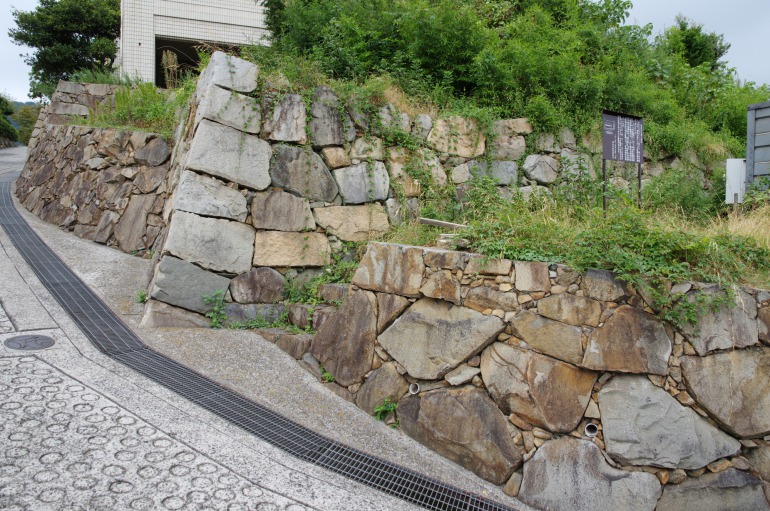
Tomonoura's stonewall remains
During the 14th century, feudal lords fought over the land of Tomo, causing some of the temples to burn down. As Japan entered its Warring Period (1467 – 1590), the Mohri samurai clan took over the area and decided to build a castle in the area, called Tomo-yogai (鞆要害). It was later renamed the Tomo Castle (鞆城), and set as one of the hub cities of the Bingo province (now Hiroshima). In later years, figures like feudal lord Ashikaga Yoshiaki and shogun Fukushima Masanori chose Tomo as their bases.
Tomonoura’s Retro Townscape

The old-town streets of Tomonoura
Tomonoura is recognized for its well-preserved, retro streets. The town has been able to retain its vintage atmosphere due to its location. Tomonoura sits in a quiet little peninsula, distancing itself from surrounding major cities, and was never big on developing as an urban city. As a result, Tomonoura retains its old-fashioned architecture and streets, to give its visitors a taste of a long-gone era.
The port town of Tomonoura preserves much of its old townscapes from the Edo era, and this is one of the many things drawing travelers to its doorstep.

A port scenery of Tomonoura
7 Must-See Spots in Tomonoura
Thanks to its long history as a port town and picturesque scenery, Tomonoura has a great stock of locations for you to see and experience. Whether you appreciate the beauty of Tomonoura's many shrines and temples, the stunning seaside views, or historical architecture, there is something in this port town for every traveler.
Here are 7 spots for you to visit, and envelope yourself in Tomonoura's clear coastal air at!
1. Fukuzenji Temple

Taichoro
Fukuzenji Temple was built in 950, and its sea-viewing room is most well known. Called Taichoro (対潮楼), the room was built in 1690 specifically for the purpose of looking at the view of the Seto Inland Sea. From here, you can see Sensui-jima Island and an overall view of the entire Tomonoura area.
Having a long and rich history, Tomonoura has become home to many shrines and temples. The road leading up to Numakuma Jinja Shrine is even lined with temples on both sides itself!
2. Ioji Temple
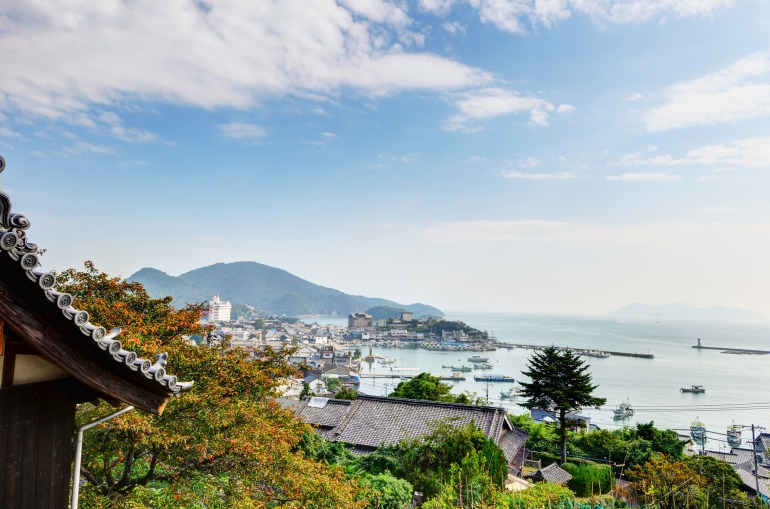
The view from Taishinden Hall
Ioji Temple, made in 826, is the second oldest temple in Tomonoura. The view from the temple’s Taishiden Hall, located 583 steps up a hill, is one you will never forget.
3. Sensui-jima Island – 仙酔島
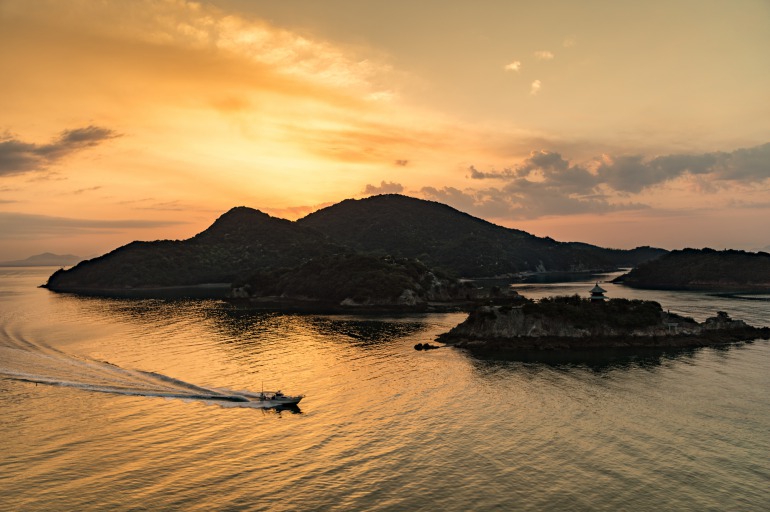
Sensui-jima
Sensui-jima is an island located a 5-minute ferry ride away from Tomonoura Port. Although the island is uninhabited, there are resorts and leisure facilities like camping grounds. On summer nights, you can join in on a sea-firefly tour to see the creatures illuminate Seto Inner Sea.
4. Museums and Exhibits
Visit the museums and exhibits throughout Tomonoura to learn about the port town’s rich history and culture! Here are a few museums and exhibits unique to Tomonoura:
Ryoma’s Hiding Place
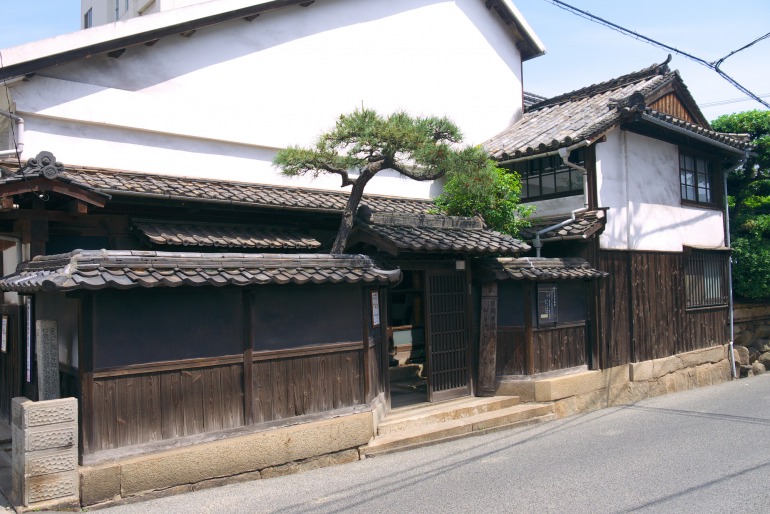
Ryoma’s Hiding Place
In 1867, Sakamoto Ryoma, a samurai heavily involved in the overthrowing of the Tokugawa government, stayed in Tomonoura for a brief period of time. He ended in up Tomonoura with his shipping and trading company, Kaientai, after his ship sunk near the port town. Having connections with the clans in the region, Ryoma stayed at shipping agent Masuya Seiemon’s house, which is now dubbed as “Ryoma’s Hiding Place”.
5. The Old Ota Residence

Ota Former Residence
The Nakamura family owned the Ota Former Residence in the 1600s. In 1659, Nakamura Kichibei began making and selling Houmeishu (保命酒), a herbal liquor, in his home in Tomonoura. His business thrived nationwide, and he began calling his house and shop the “Houmeishu-ya 保命酒屋”. During the time, Tomonoura’s economy became largely dependent on the Houmeishu business.
As the Edo period came to an end, so did Tomonoura’s Houmeishu business. The Ota Family, who were big in the cargo vessel industry, took ownership of the house. The house currently retains the Ota family’s name.
6. Tomonotsu Museum
Tomonotsu Museum dedicates itself entirely to Art Brut (also known as outsider art). Art Brut, meaning “raw art” in French, is a genre of art created by self-taught artists who distance themselves from mainstream art. This is one of the few outsider art museums and the third ever of its kind in Japan. The museum is hosted in a renovated “kominka 古民家”, a traditional style Japanese house, but still bears a “kominka” like exterior.
7. The Old Lighthouse of Tomonoura
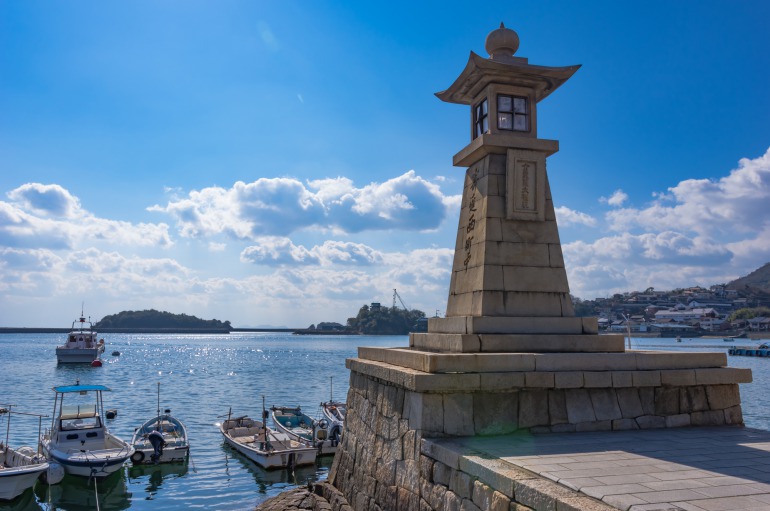
The old lighthouse
The 10m-tall lighthouse you can find by the port has been there since 1859. It has been guarding Tomonoura’s waters and used to keep sailors and locals alert and safe during the darker hours. You can also find other ruins specific to a port town like Tomonoura, such as ship inspection/taxation spots, docks, and stone steps.
Events
Tomonoura Kanko Bream-Fishing (May)

Tomonoura Kanko Tai-ami
“Tai-ami” is a sea bream fishing method native to Tomonoura with over 380 years of history. Though this method of sea bream fishing is no longer performed, every May the town organizes an event to demonstrate how it was done. The fishing method is more like a festival, with taiko drumming and traditional princesses’ dance performed on the ship to wish for a successful yield. You can witness this festival on a real fishing ship every day in May.
【Fees】
・ General (high school students and older): ¥2800
・ Elementary and junior high school students: ¥1400
Tomo Bentenjima Fireworks Festival – 鞆の浦弁天島花火大会 (May)

Fireworks reflecting in the Sea
In Tomonoura, fireworks are launched to signal the end of spring and the start of summer. Here, you can be a part of a Japanese fireworks festival before they’re held in the scorching heat when most of them are held. The fireworks festival began in the Edo period to pray for safety on sea. Over 2000 fireworks are shot up from Bentenjima, a small island right across from Tomonoura Port. At the port are food stands and shops you can wander around, preferably in a yukata to really kick off the summer spirit.
Otebi-shinji – お手火神事 (July)

Otebi-shinji
Otebi-shinji is one of Japan’s three major fire festivals. It is hosted by Numakuma Shrine, the shrine located uphill on temple street (寺町通り). The main event of the festival is when brave men carry a 150kg burning mikoshi (神輿; portable shrine) throughout the shrine grounds.
Tomonoura Fall Festival – 鞆の浦秋祭り (Sep.)

Tomonoura Fall Festival
Tomonoura Fall Festival is hosted by Watasu-jinja Shrine, and is held on a span of three days (Friday to Sunday). On Friday, a mikoshi is carried to the designated village of the year. The following day, the mikoshi is celebrated in the village, and then is returned to Watasu Shrine on the final day. You can witness a huge taiko unit and the spirit of a true Shinto festival.
Access
Nearest station: Tomonoura 鞆の浦 (bus stop)
From Fukuyama Station
【Fukuyama Sta.】— Tomotetsu Bus / for Tomonoura
→【Tomonoura】
From Hiroshima Station
①【Hiroshima Sta.】— JR Sanyo Main Line / for Itozaki
→【Itozaki Sta.】— JR Sanyo Main Line / for Okayama
→【Fukuyama Sta.】— Tomotetsu Bus / for Tomonoura
→【Tomonoura】
②【Hiroshima Sta.】— Nozomi Shinkansen / for Tokyo
→【Fukuyama Sta.】— Tomotetsu Bus / for Tomonoura
→【Tomonoura】
From Hiroshima Airport
【Hiroshima Airport Sta.】— Hiroshima Airport Line (Bus) / for Fukyama Station
→【Fukuyama Sta.】— Tomotetsu Bus / for Tomonoura
→【Tomonoura】


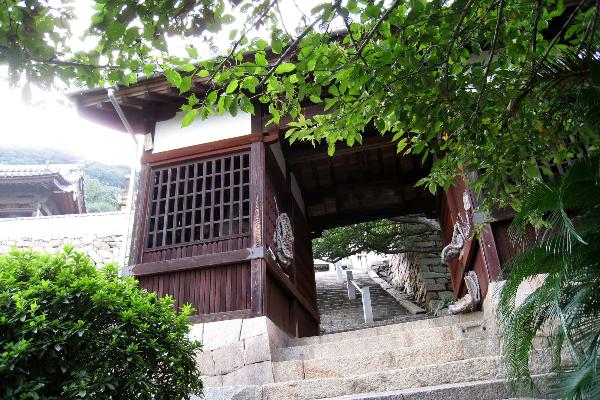















_600x400.jpg)













_600x400.jpg)


